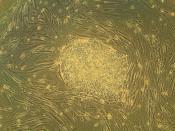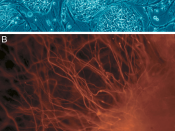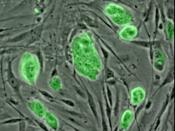Stem Cell Debate and Resolution
Imagine a world where organ transplants could be done without another person dying or
sacrificing an organ as a living donor. In this same world there wouldn't be a disparity between the number of the people needing organs and the number of organs available. This somewhat fantasy world exists only in the laboratories that conduct stem cell research. In 1988 the first successful use of cord blood as a source of haemopoietic stem cells for transplantation was done. This first transplantation was done to treat a boy with Fanconis anemia. Since 1988 more than 70,000 worldwide umbilical cord-blood banks have been established. Approximately 2,000 transplantations have been done, predominantly for children, but occasionally for adults too (Burgio, Gluckkman, and Locatelli, 2003).
The discovery, separation, and culturing of human embryonic stem cells has been one of the most important breakthroughs in biomedicine of the century. The discovery of cells is such a huge potential for improving and prolonging our lives, which have bought some of the most severe and difficult questions about the value of life itself, the destruction of the embryos.
Stem cell research has shown benefits in many areas of health, but most of the studies have only been done on lab animals. Some examples are:
improved stroke recovery shown in rats,
embryonic stem cells were used to treat a Parkinson's-like condition in mice and rats, and
scientists caused new brain cells to grow from adult stem cells in birds,
Canadian and Italian scientists transplanted adult stem cells from the brains of mice into the bone marrow of other rodents. The stem cells changed and began making blood cells.
Movement was restored in paralyzed mice and rats by injecting stem cells into the spinal fluid.
In one of the few stem cell studies done...


